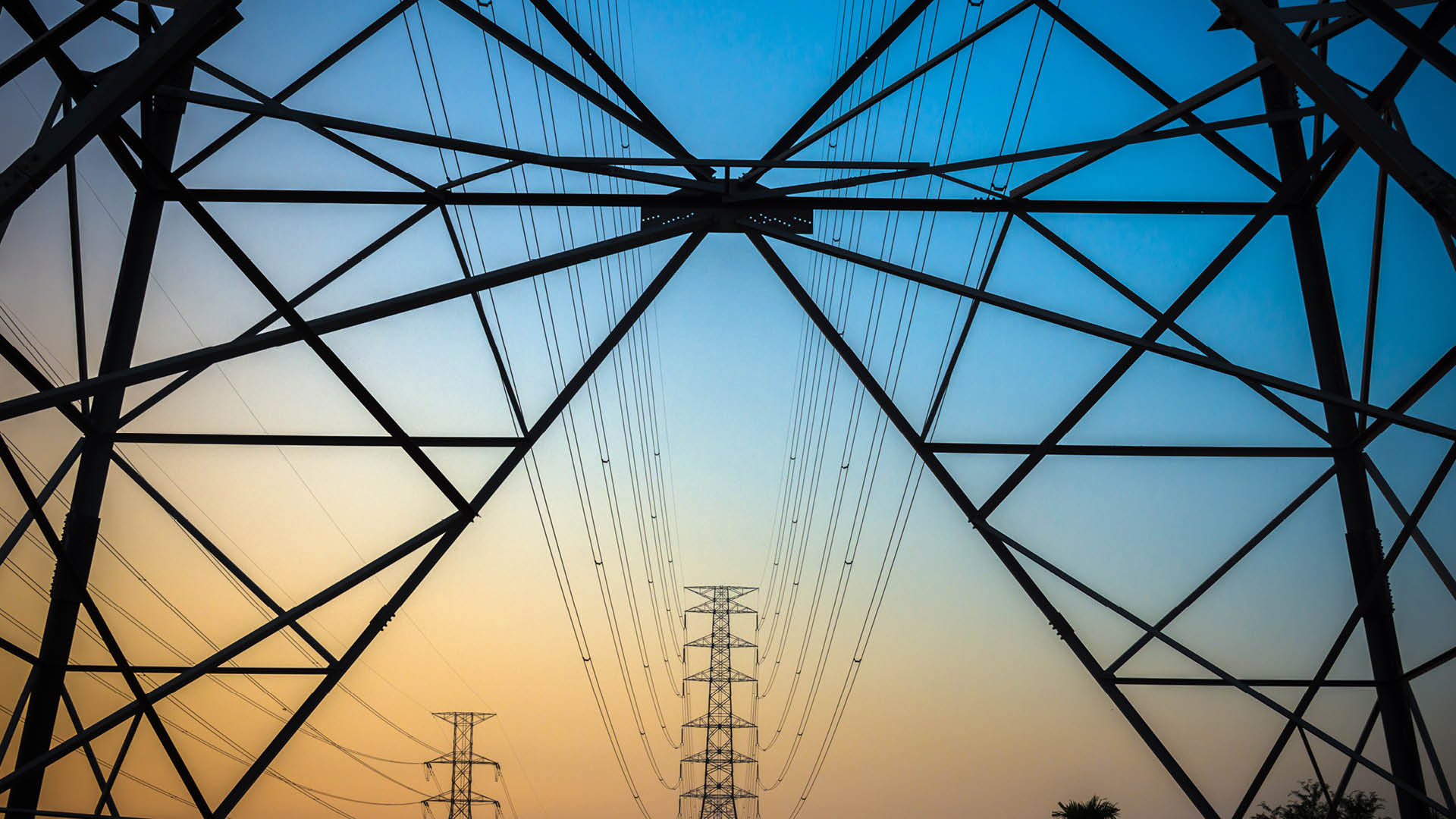On 15 April 2025, Ofgem approved the National Energy System Operator’s (NESO) Target Model Option 4 (TMO4+) package of reforms. The TMO04+ reforms are designed to speed up grid connections and support the cost-effective delivery of the UK Government’s Clean Power 2030 Action Plan (CP30 Action Plan) to achieve at least 95% of GB’s generation from clean power by 2030 and net zero by 2050.
As set out in our previous briefing, “First Ready, First Connected”: Reform to GB Electricity Grid Connections, the TMO4+ reform package represents a significant shift in the UK electricity grid connection process. Key aspects of the reform are as follows:
- The existing “first come, first served” connections process will move to a rationalised connections process that prioritises projects that are ‘ready’ and ‘needed’ whilst at the same time ensuring ‘efficiency’ so that the technology mix of ready projects is preserved where a ready project drops out. For most projects, ‘ready’ means obtaining exclusive land rights and sufficiently progressing planning status within a defined period of time, and ‘needed’ means meeting current and future system needs, initially as outlined in the CP2030 Action Plan, although some projects will be deemed ‘needed’ as discussed below.
- Connection offers will be made through a two-gate process (known as ‘Gate 1’ and ‘Gate 2’) following periodic application windows. Gate 1 offers will be conditional, with an indicative connection date and location, and given to projects that are either not ‘ready’ or not ‘needed’. Gate 2 offers however will have a confirmed connection date and location and be granted to ‘ready’ and ‘needed’ projects.
- The connections queue will no longer dictate the network works required, which will instead be based on wider network needs and cost-efficient planning resulting in a faster rate of connection. As discussed in our previous publication, “First Ready, First Connected”: Reform to GB Electricity Grid Connections, this may however result in a disconnect between contracted capacity granted and the network companies build out plans.
Who is impacted?
The TMO4+ reforms impact all projects connecting to the transmission system, including those in the existing queue, with the caveat that demand projects will automatically be deemed as ‘needed’. Existing projects that are either not ‘ready’ or not ‘needed’ will have their contracts varied and be provided with a conditional Gate 1 offer. Once ‘ready’ and ‘needed’, they will need to reapply in a future application window to be granted a confirmed Gate 2 offer. On the other hand, existing projects that are ‘ready’ and ‘needed’ will be granted a Gate 2 offer, although NESO has indicated that a small number of projects may see dates moved back under specific circumstances.
Generation and storage projects connecting to the distribution system will also be impacted if they may have a significant system effect on the national electricity transmission system that requires a Transmission Impact Assessment (TIA) to be made by NESO. (This is currently deemed to be the case for distribution-connecting projects in England and Wales with 1MW of capacity or more (although there is an ongoing code modification (CMP446) aimed at increasing the capacity threshold to 5MW, which would see sub 5MW projects bypassing the TMO4+ process). In Scotland, the applicable capacity threshold is 200kW or, if connecting to the Northern Scottish Islands, the capacity threshold is 50kW.) Embedded projects that required a TIA will need a Gate 2 offer to secure capacity on the transmission system. However, all demand projects connecting to the distribution system are out of scope.
To align with the TMO4+ process, distribution network operators (DNOs) have separately established an equivalent ‘Gate 1’ process – known as ‘Distribution Gate 1’ – for distribution-connecting generation projects. Distribution connection offers for projects that are either not ‘ready’ or ‘needed’ will be varied to become indicative in line with their indicative Gate 1 offer from NESO with the ability to apply for and secure a Gate 2 offer at a later date (once ‘ready’ and ‘needed’). Distribution Gate 1 offers will also be given to projects that rejected a Gate 2 offer, do not apply for or do not submit evidence for Gate 2, or withdraw from the Gate 2 process. The Distribution Gate 1 process means that projects not proceeding through Gate 2 will not maintain a distribution queue position, capacity held at distribution, and any ‘last-in, last-out’ stack position for constrained connections.
Whilst disputes relating to the terms of a connection offer may be referred to Ofgem for determination, Ofgem have confirmed that, provided revised connection terms are necessitated by the proper implementation of TMO4+ reforms, they will likely be “reasonable”, and Ofgem expects to revise its determinations practices and procedures accordingly.
Protected categories
Certain projects in the existing queue will be protected. This applies to projects scheduled for commissioning in 2026 that have planning consent and have reached final investment decision. ‘Significantly progressed’ projects will also be protected. This includes projects that have planning consent, hold a Contract for Difference (CfD) or Capacity Market (CM) agreement, have regulatory approval from Ofgem (e.g. a Cap and Floor agreement or Merchant Interconnector approval) or have a Network Services procurement contract with NESO. Protected projects will automatically be deemed ‘needed’ and guaranteed to receive a Gate 2 offer (so long as they are ‘ready’), providing clarity to these projects sooner.
Whilst only projects with planning consent and due to connect in 2026 will retain their existing connection date and location, Ofgem has recommended also providing similar assurance to significantly processed projects that are due to connect on or before 31 December 2027. Ofgem has also recommended allowing projects/customers that submitted planning on or before 20th December 2024 with no outcome by the closure of the CMP435 application window, but which achieve consent after the closure of the CMP435 window, to be eligible for a Gate 2 offer in a future CMP434 window even if this would breach zonal or national permitted capacities.
In the case of demand customers, the reform should accelerate their connection and, in exceptional circumstances (and subject to NESO issuing a notice), demand projects may be prioritised if they aid system operability or reduce constraints, although Ofgem is also exploring whether other changes may be required in the future to better facilitate demand, particularly those of strategic importance (e.g. large demand that benefits UK economic growth). For the time being, even though deemed ‘needed’, demand projects will still need to satisfy the readiness criteria, which may be difficult for some large demand sites (e.g. data centres).
Overall, the reform is expected to result in a ~296GW confirmed Gate 2 connections queue (including built capacity) and in a total of 482GW of projects having their contracts amended to Gate 1 terms either because they are not ‘ready’ or not ‘needed’. Not needed projects are likely to include battery storage projects and some solar projects in specific geographical locations. Onshore and offshore wind, interconnectors and low carbon dispatchable power are estimated to be undersupplied in the confirmed queue to 2035.
Industry response
The majority of respondents to the TMO4+ reform consultation generally supported the reform, but there were also those who believed that it may undermine investor certainty, particularly in the case of projects that may be in receipt of a Gate 1 offer.
What’s next?
To implement the TMO4+ reform, relevant licence conditions and industry codes will need to be modified. In addition, new Connections Methodology documents will need to be adopted and reviewed on annual basis by NESO (subject to Ofgem approval). These Connections Methodology documents will outline the criteria for Gate 2 connection eligibility, the structure and sequence of the Gate 2 connections queue, and the process for making offers to projects that are ‘ready’. The goal is to align these projects with the Government's strategic plans, focusing on those that are critical for supply security or system operation, significantly reduce system or network constraints, are highly innovative, or have particularly long lead times. The Connections Methodologies will also enable NESO to propose expediated changes to improve the connections process.
To support projects through the new TMO4+ processes, NESO and DNOs are expected to publish guidance documents, FAQs and templates, as well as run a series of webinars and surgeries for both transmission and distribution connecting customers.
In terms of timeline, the Gate 2 evidence submission window for existing transmission-connecting customers is expected to open in July 2025, and for existing distribution-connecting customers – in May 2025, with NESO confirming to existing projects if they have been successful in securing a place in the reformed queue from September 2025. After this, NESO and DNOs are expected to start issuing revised offers from Autumn 2025, with the initial focus on those connecting in 2026 and 2027. As for new applicants, NESO will aim to open the next application window before the end of 2025. However, this may not be the end of the TMO4+ reform.
On 6 February 2025, NESO introduced a new code modification (CMP448) to address a potential gap in the TMO4+ process. While the Queue Management process allows for the removal of projects that do not meet their User Progression Milestones within the specified timeframe, NESO is concerned that developers lack sufficient financial incentives to regularly review the viability of their projects, especially d in the high-risk period between meeting Gate 2 and User Progression Milestone 1.
To address this issue, NESO proposes introducing an additional fee, called a Progression Commitment Fee (PCF). The PCF would be payable upon termination or, in its appropriate proportion, upon reduction in capacity during the specified period. The aim is to incentivise developers to either voluntarily exit the connections queue or sell the project to a committed developer in a timely manner. The PCF would start at £2,500/MW and increase by £2,500/MW every six months up to a maximum of £10,000/MW per project. Initially, the PCF would be dormant and set at £0/MW. However, if a metric indicative of the health of the connections queue exceeds a defined trigger, NESO would have the option to activate the PCF increase, subject to Ofgem's agreement.
This code modification targets all projects that hold Transmission Entry Capacity, Developer Capacity or Interconnector Capacity and have accepted a Gate 2 offer. Distribution and transmission connecting demand is out of scope. At NESO's request, Ofgem has approved that this proposal be progressed on an urgent basis. This allows a decision to be made before the Gate 2 offers are issued, enabling NESO to include the relevant provisions in those offers. According to the modification timetable, the Final Modification Report is expected to be issued to Ofgem on 4 July 2025, with Ofgem decision in Q3 2025 and implementation in Q1 2026.
As noted in our recent publication, there remains the possibility of legal challenges being brought against Ofgem’s decision, which has been the case with other significant changes relating to network access and charging and which have been the subject of prolonged legal challenges. To protect against the risk of legal challenge, the Government is proposing additional powers through the Planning and Infrastructure Bill (see our summary here). Whilst those considering challenging the decision may have multiple different appeal routes – some decisions being subject to judicial review and others to appeal to the Competition and Markets Authority – these have short limitation periods and so any action will need to be brought fast.
Conclusion
In the short-term, the TMO4+ reform may create uncertainty for existing projects that do not fall within the “protected” category. In addition, it may transpire that those in receipt of a Gate 1 offer may not be willing to make significant investments in developing their projects before moving to a Gate 2 offer. However, in the long-term, the TMO4+ reforms are expected to result in a more cost-efficient and expedient grid connection process thereby increasing investor confidence and focusing investment where it is needed to deliver the CP30 Action Plan.





